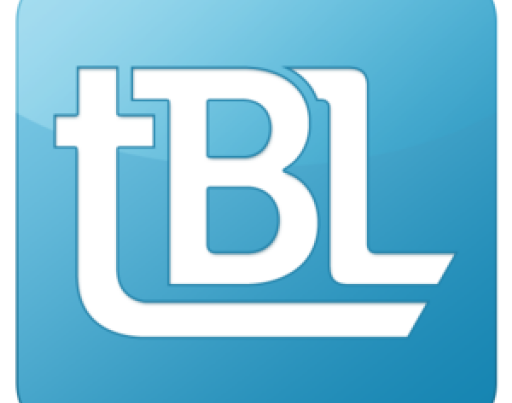Read on to learn about the new changes and access free tools to help you simplify compliance.
Accounting for leases embedded in service contracts
Under the new lease accounting standards ASC 842, IFRS 16, and GASB 87, organizations are required to examine their service contracts (such as logistics, security, and data storage), and assess whether those agreements contain any embedded leases.
No shortcuts exist for identifying embedded leases. Service contracts will rarely contain the terms “lease,” or “rent,” making the process a complex undertaking, particularly for companies with high volumes of agreements to evaluate. In a KPMG survey released during the period in which public companies were transitioning to the new standard, respondents reported that identifying embedded leases was one of the most challenging aspects of the transition.
For better clarity on how leases can be embedded in contracts, let’s walk through an example.
Company A has a security services contract with ABC Security. ABC Security provides cameras, monitors, and keypads for Company A’s facilities. The contract states that Company A will have full usage of ABC Security’s monitoring equipment. The contract lists each item, along with an identification number, that will be used for this contract.
Company A will have full control over the monitoring equipment, and will obtain substantially all of the economic benefits of the security equipment. The equipment portion of this contract meets all of the standards required for an embedded lease:
- The underlying assets are specifically identified.
- Company A has control of the underlying assets.
- Company A obtains substantially all of the economic benefits of the underlying assets.
If you’re looking for a starting point when evaluating your contracts, security, logistics, and warehousing agreements commonly contain embedded leases.
LeaseQuery offers an embedded lease test to evaluate each of your contracts for embedded leases:


If you find a contract that contains a lease, use our lease asset tracker to keep a detailed record. We also have a lease asset tracker specifically for government entities.
Are software licenses considered service contracts under ASC 842, IFRS 16, or GASB 87?
The new rules for lease accounting raise questions about the treatment of expenses related to fees for software as a service (SaaS) fees and software licenses. Many software contracts grant customers the right to use an intangible asset. Because of the “right to use” language, confusion exists about whether these contracts can be considered leases. Under US GAAP, ASC 842 clearly states intangible assets do not meet the qualifications for a lease. GASB 87 also excludes intangible assets.
Under IFRS 16, intangible assets (and therefore software licenses) can meet the qualifications for a lease. As such, the treatment for the costs associated with those licenses varies from US GAAP. For companies reporting under IFRS, it is vital to work with your auditors to make sure you interpret the guidance correctly.
Accounting for software as a service contracts – what’s changed
Usage of cloud-based software was already on the rise before the pandemic. In the wake of COVID-19, SaaS has become a vital resource for work, school, and even entertainment. With so many organizations investing in cloud-based computing, it’s important to get up to speed on the guidance for accounting for these contracts.
The updated guidance, FASB Subtopic ASC 350-40, Customer’s Accounting for Implementation Costs Incurred in a Cloud Computing Arrangement That Is a Service Contact (ASC 350-40), was effective on January 1, 2020 for public companies. Non-public entities are required to follow the new guidance for all annual reporting periods beginning after December 15, 2020.
Prior to the issuance of ASC 350-40, two different accounting treatments for software contracts existed:
- Contracts containing a software license: organizations could capitalize the cost of the software license and its implementation costs.
- Service-only software contracts: the guidance was a little more unclear.
With cloud computing contracts, oftentimes the buyer is purchasing a service, and not a license. Because of a lack of clarity in the guidance, it was common to treat all costs related to these contracts as expenses incurred, leading organizations to miss out on the opportunity to capitalize certain fees.
As a result, buying on-premise software seemed like a more attractive decision to a company’s bottom line. But purchasing a SaaS product can have far-reaching benefits that eclipse the income statement concerns. The FASB, partially in recognition of how the lack of clarity in the standard was unfairly affecting these buying decisions, issued ASC 350-40. The new guidance clarifies the treatment of cloud computing arrangements – those including and not including software licenses. Read our blog providing a more in-depth explanation of the new guidance, as well as a step-by-step example of service contract accounting, including journal entries.
Subscription-based information technology arrangements accounting for government entities
Similar to private organizations, government entities vary widely in their approach to accounting for cloud computing contracts. In 2020, the GASB released Statement No. 96, Subscription-Based Information Technology Arrangements, (GASB 96) which is the first guidance for state and local government reporting on software contracts. The new rules are effective for all reporting periods starting after June 15, 2022.
The guidance outlines the definition of a subscription-based information technology arrangement (SBITA) as “a contract that conveys control of the right to use a SBITA vendor’s IT software, alone or in combination with tangible capital assets (the underlying IT assets), as specified in the contract for a period of time in an exchange or exchange-like transaction.” To easily determine if your contracts meet the definition, use our free SBITA identifier tool.
The reporting requirements outlined in GASB 96 mirror those of GASB 87, the government guidance for reporting on leases. Government entities are required to record a right-to-use subscription asset and corresponding subscription liability. The standard also provides guidance for cash outlays, such as implementation fees, to prevent future disparities in how government entities report on non-subscription costs.
IFRS and cloud computing contracts
Unlike the FASB and GASB, the IASB has decided not to add setting a new standard for cloud computing contracts to its work plan. The board’s Interpretations Committee determined current guidance offered in IAS 38, IFRS 15, and IAS 1 provide sufficient guidance for addressing SaaS contracts, including customization and configuration costs. This is a tentative agenda decision, and the Interpretations Committee is accepting comments until February 15, 2021.
Looking ahead
The FASB and GASB changes to accounting for cloud computing arrangements should offer some relief for accountants. As more software is hosted in the cloud, these updates enable organizations to make informed decisions regarding potential software investments without being hampered by confusion about the accounting treatment for the purchase.
Conversely, addressing embedded leases on an ongoing basis will require more legwork. You will need to implement processes allowing you to evaluate new contracts and identify the lease and non-lease costs.
The new standards for cloud computing offer simplicity and clarity, while the standards for leases make things more complicated. The Boards give a little and they take a little.



